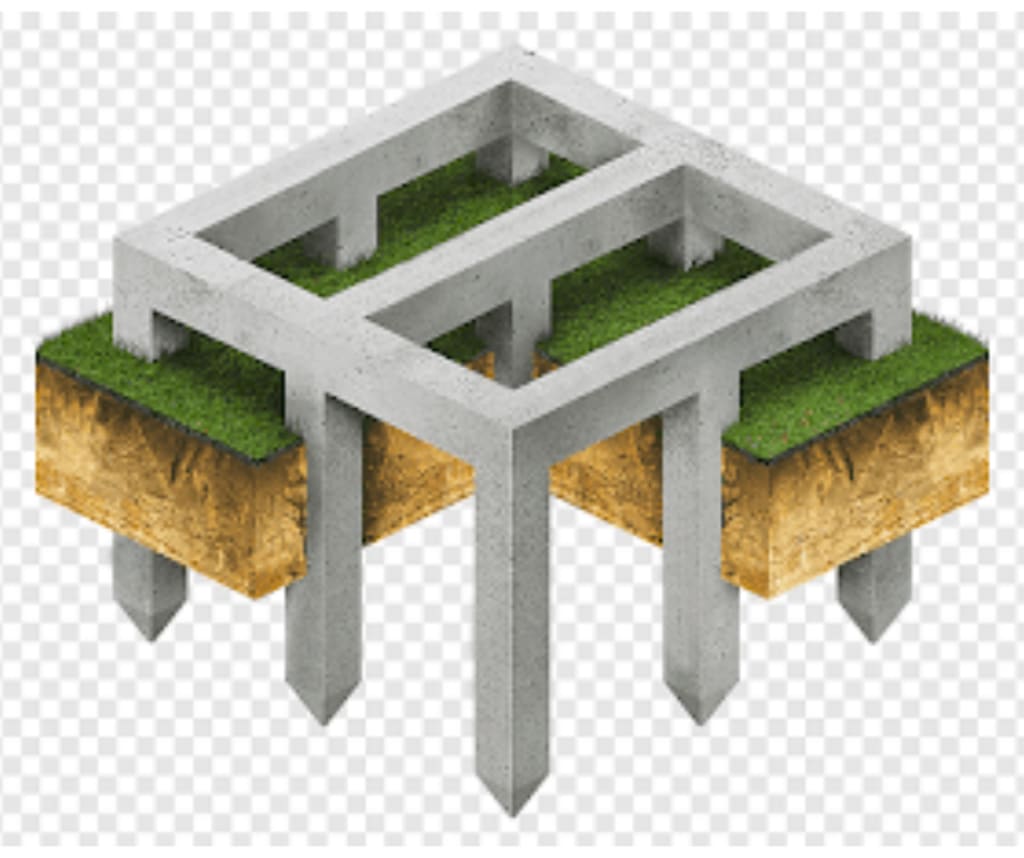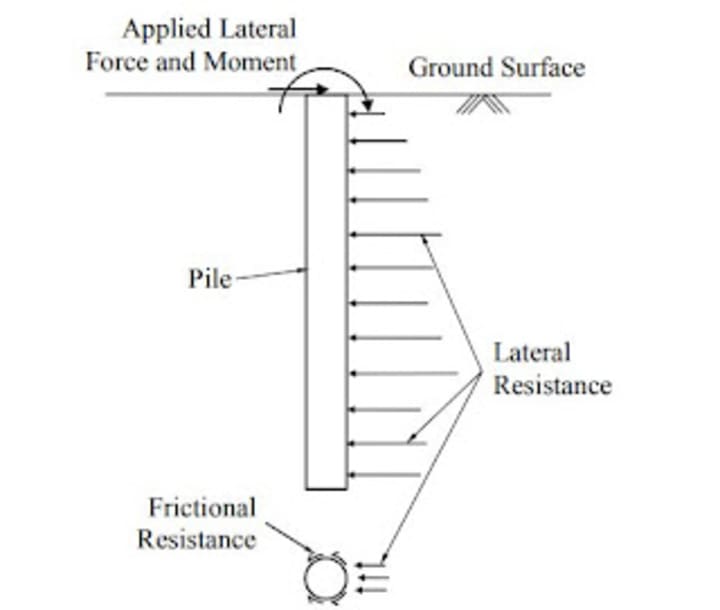9 TYPES OF PILES BASED ON FUNCTION & DESIGN
Civil Engineering

Based on its design function and building manner, pile foundations are categorized into numerous varieties. Pile foundations are utilized for large structures with weak soil and to prevent excessive building settlement in the future.
Based on the design, there are many types of piles.
Piles are grouped into the following categories based on their design and function:
1. End Bearing piles: The load-bearing capability of an end-bearing pile is developed at the toe of the pile, which is put on a hard layer such as rock, clay, or gravel. To support weight at the toe of the pile, it creates maximum friction and bearing.

End-bearing piles carry the weight from the superstructure to the hard strata through soft, compressible soil strata. As a result, end-bearing piles behave similarly to columns.
2. Friction or floating piles: Shear stresses along the sidewalls of friction or floating piles develop the load-bearing capacity. As a result, friction between the pile's surface and the earth conveys the weight to the surrounding soil. The weight is distributed to the soil below and laterally.

3. Combination of friction and end bearing piles: The combination of friction and end bearing movement can also help piles transport weight. For example, a pile can penetrate through soft soil with adequate frictional resistance and find a form layer where load-carrying capability can be developed by end bearing.

4. Anchor or tension or uplift piles: Anchor piles are used to give stability against horizontal forces.
Tension or uplift piles are piles that are used to anchor constructions that are subjected to uplift owing to issues such as overturning pressure or overturning moment caused by horizontal pressures.

5. Compaction piles: To increase the bearing capacity of the soil, compaction piles are used to compact loose granular soils. Because it does not have to bear any weight, sand is utilized to make a compaction pile. Sand compaction piles are one of the options for enhancing ground stability, preventing liquefaction, and lowering settlement, among other things. A hollow steel pipe is driven into the earth in this way. The air pressure is directed on the sand inside the pipe as it is removed.

6. Fender piles: Fender piles are piles that are built to defend coastal structures from ships and other floating items. Depending on the design specifications, fender piles can be made of wood, steel, or concrete. Prestressing can also be used to boost the fending capacity of concrete piles. Timber fender piles are less expensive at first and require less long-term maintenance than steel fender piles.

7. Sheet piles: Sheet piles are steel section piles with interlocking edges that are driven into the ground to provide earth retention and excavation support, either permanently or temporarily.
Sheet piling has been employed in a number of applications, including marine bulkheads and retaining walls with limited area. In addition to this, the cellular cofferdam is a unique sort of retaining wall that is widely utilized for both temporary and permanent projects.
A variety of materials are used to make sheet piling. The material used is determined by a variety of considerations, including the material's strength and environmental needs.

8. Batter piles: Batter piles are piles driven into the soil at an angle to the vertical to increase the foundation's load-carrying capacity. It is normally installed at a 14 to 20-degree angle to the vertical. Because offshore structures, towers, and bridges are exposed to overturning moments owing to wind, waves, and ship collisions, batter piles are widely utilized to support them. A combination of vertical and batter piles is employed to shift the overturning moment to compression and tension forces.

9. Laterally loaded piles: Laterally loaded piles are those that are built to support lateral loads. When a laterally loaded pile is subjected to lateral load, a portion of the entire pile attempts to shift horizontally in the direction of the applied load, causing the pile to bend, rotate, or translate.

About the Creator
Nazir Bhatkar
I am a digital marketer and content writer.






Comments
There are no comments for this story
Be the first to respond and start the conversation.